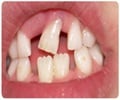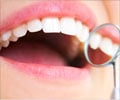What is Tooth Restoration Technique?
Tooth restoration techniques are dental procedures used to restore the structure and function of a tooth. Restorative dentistry is gaining popularity as more people give importance to their appearance. After all, teeth play an important role in defining the smile of a person.
Dental braces have been used to straighten misaligned teeth. Other techniques are also available to restore the perfect smile.
Tooth restoration techniques repair damaged teeth. Teeth damaged by dental caries are painful and also not aesthetically appealing. They also give an indication of poor dental hygiene. A broken tooth resulting from trauma may require to be restored to its normal appearance. A cosmetic dentist can fix these issues; they not only improve the appearance, but also help in making the tooth functional.
For most tooth restoration procedures, initially the tooth has to be prepared by removing the damaged portions to make room for the restorative material. Restorative material is introduced either in the same or next sitting. Adhesives are sometimes used to keep the material in place. Superficial damages may only need application of veneers, which are tooth-colored materials applied on the surface of teeth that are partially damaged or discolored. Some discolorations are treated using bleaching agents.
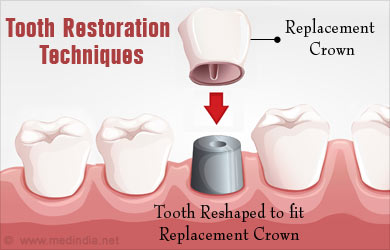
What are the Types of Tooth Restoration Techniques?
Dental restorations may be:
- Direct or indirect:
In direct restoration, dental filling material is used which is soft and is placed into a prepared tooth where it sets and becomes hard. It is done for teeth where there is adequate support for the material to set. An amalgam or composite filling is an example of direct restoration.
In indirect restoration, the material for restoration is set outside first based on dental impressions from the tooth that requires restoration. The set material is then placed on the tooth and is fixed with an adhesive material. Indirect restoration usually requires two sittings, whereas direct restorations are often done in one sitting. A temporary restoration may sometimes be used while the permanent restoration is getting ready.
Examples of indirect dental restorations include the following:
- Crowns: Crowns are used to support and replace the damaged enamel. They may partially or completely cover the damaged tooth. They are sometimes used as bridges to fill the gap of missing teeth.
- Inlays: Inlays are materials that are set outside and then placed into the prepared tooth.
- Onlays: Onlays are materials that cover the cusps of the tooth. A complete crown is an example of onlay.
- Dental prosthesis: Dental prosthesis is used to replace absent teeth and improve facial appearance.
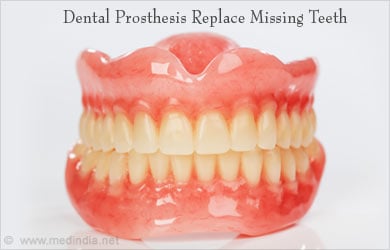
- Intracoronal or extracoronal restorations:
Intracoronal restoration is done within a prepared tooth, an example being a dental filling.
Extracoronal restoration is on the outside of the tooth, for example, placement of a crown. The indirect technique is usually used for extracoronal restoration.
A relatively new approach in restorative dentistry is the use of computer aided design/computer aided machining (CAD/CAM) technology. This approach uses digital technology to create a 3-D image of the tooth. A ceramic model based on the image is produced which is used to restore the tooth. This is a type of indirect restoration that can be done in a single sitting.
What are the Materials used in Tooth Restoration?
Several materials are available for tooth restoration. A gold tooth was once considered a sign of prosperity. However, today more and more people are opting for a more natural look with material that matches their tooth color.
The choice of material used for tooth restoration depends on the requirements of the particular patient, availability and the comfort of the dentist in using them. Materials used in tooth restoration include the following:
- Amalgam: Amalgam is a sturdy material to repair dental caries. Metals like silver, tin, copper and zinc are mixed with mercury to form an amalgam. Mercury-free amalgam which uses gallium instead of mercury is also available. Amalgam is cheap and therefore affordable to most patients. Its disadvantage is that it may not be aesthetically acceptable to all because of its blackish color.
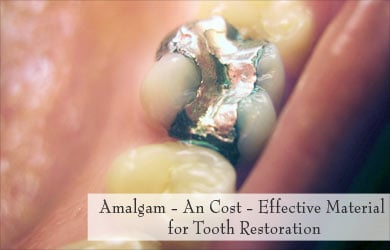
- Gold: Fillings with gold last for a long time if they are done properly. Gold is soft to use and does not require a bonding substance. It can be used for smaller lesions. Gold can also be used to make crowns. However, using gold is a costly procedure due to the material involved. Gold is also used as an alloy with other metals.
- Composite resin: Composite resins are tooth-colored materials that are fixed with a bonding agent after preparation of the damaged tooth. They contain two primary components like polymers and silica particles, along with several secondary components. They undergo wear and tear with use and also tend to discolor with time. Following insertion of the resin, certain types of light are used for curing the composite. Several innovations have been made to improve the properties of composite resin when used for tooth restoration.
- Glass ionomers: Glass ionomers release fluoride and can prevent dental caries. However, they are more brittle and can abrade easily and are usually less preferred as compared to composite resin. A combination of composite resin and glass ionomer is called gliomer, which is also used as a restorative material. Metals are also sometimes added to glass ionomers.
- Porcelain: Porcelain provides tooth-colored material to restore teeth. Though it provides good aesthetics, it may not be strong enough. It may be strengthened using metals to provide a longer life.

- Biological restoration: Biological restoration is done using the fractured piece of the patient’s tooth or using an extracted tooth for restoration. The extracted tooth is obtained from a tooth bank donated by another person. It is selected based on the appearance of the missing tooth or missing part of the tooth and is fixed with a bonding material. However, it may not always be possible to find a matching tooth. In addition, some people may not prefer to use someone else’s tooth.



